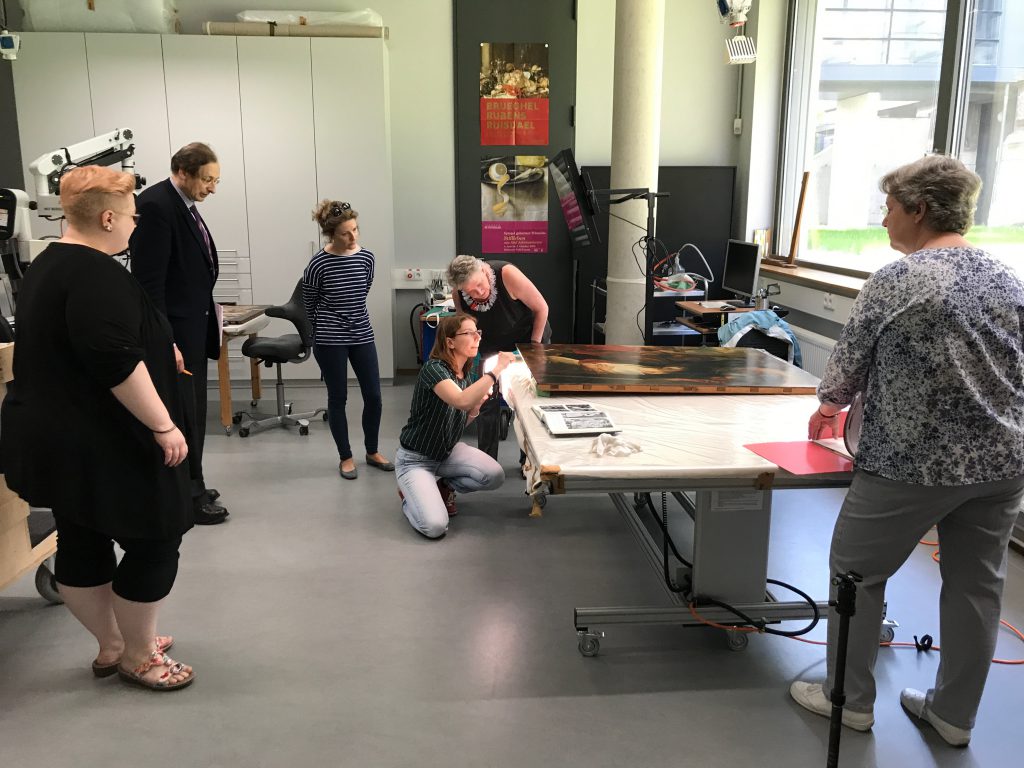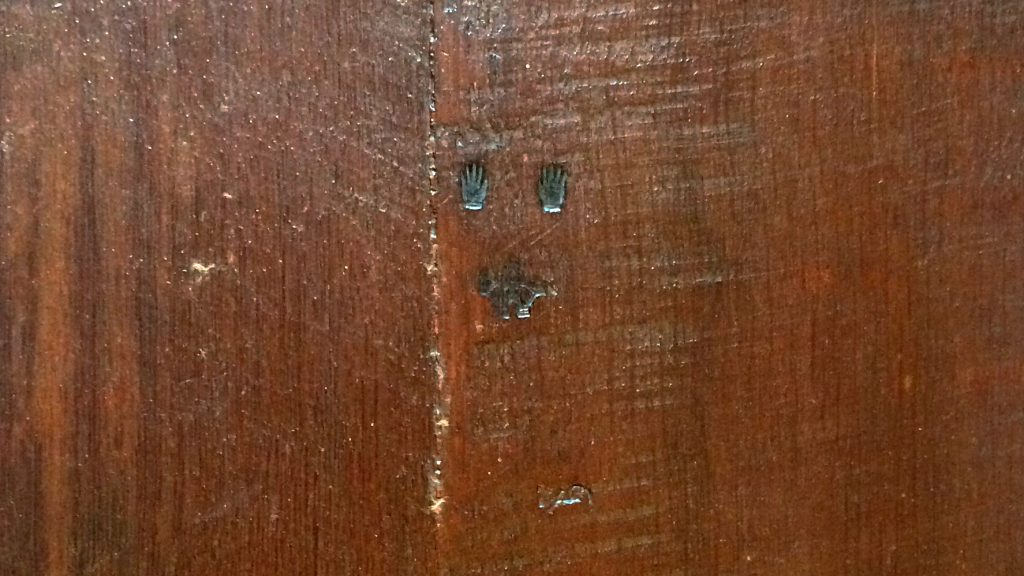The project is a groundbreaking combination of new scientific examination with established Flemish art historical practices. Fresh archival research in Belgian and other archives and the scientific results will lead to new discoveries on the lives and works of Anthony Van Dyck and Jacques Jordaens; the chronology of their paintings, their collaboration with each other, their relationship to the studio of Rubens and new information on Antwerp panel making and makers.
A non/micro-invasive dendrochronological examination determines the possible felling date of the trees that were made into the panels and, therefore, the approximate date of their use by the painters and their studios. An analysis of the growth rings of the tree will also allow the project to identify which smaller panels were cut from a larger panel, where matches can be found.
A sample dendrochronological report, examining the Ashmolean Museum’s Charles I and the Knights of the Garter in Procession, can be downloaded by clicking here (1 Mb. PDF).


The panel makers’ individual punch marks and the quality control brand marks of the Antwerp Guild of St. Luke are examined, collated and identified. These can also assist with the dating of a wood panel. For example, through examining the paintings and undertaking new archival research, we have discovered previously unknown panel makers and the years during which they worked.
Concurrently, new and reviewed archival research is conducted by the JVDPPP team as well as traditional art historical scholarship such as connoisseurship, comparative analysis, provenance research and consultation of secondary sources.